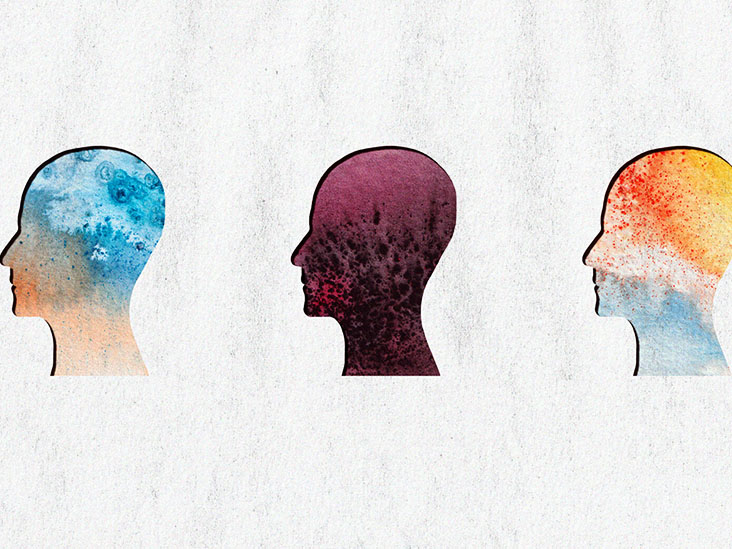
- Four years ago, the World Health Organization (WHO) acknowledged complex post-traumatic stress disorder (CPTSD) as a distinct diagnosis from PTSD.
- An international team of researchers has compiled a summary of 8 years’ worth of research and knowledge about CPTSD, including symptoms, causes, diagnosis, and treatment options.
- Researchers hope their paper will aid in the development of a standard assessment and CPTSD-specific therapies.
In 2018, the WHO acknowledged a disorder called complex post-traumatic stress disorder (CPTSD) as a separate diagnosis from PTSD through the 11th revision of the ICD-11 (International Classification of Diseases).
Now a team of international researchers, from institutions including Stanford University and the University of Zurich, have published a report summarizing the latest findings regarding CPTSD symptoms, causes, and treatment options, to assist clinicians in diagnosing and treating the condition.
The paper recently appeared in the journal The Lancet.
What is the difference between PTSD and CPTSD?
PTSD is a psychiatric condition that develops after a person experiences a form of trauma. These types of trauma may include:
- being in a serious accident
- serving during a war
- death of a family member or close friend
- sexual or physical assault or abuse.
According to the U.S. Department of Veterans Affairs (VA), about six out of every 10 people will experience PTSD during their lives. In the United States, an estimated 12 million adults have PTSD in a given year.
Dr. Marylene Cloitre is a research health science specialist at the National Center for PTSD Dissemination and Training Division located at the VA Palo Alto Health Care System, and a clinical professor in the Department of Psychiatry and Behavioral Sciences at the Stanford University School of Medicine.
She is also second author of the recent paper on CPTSD. In her view, CPTSD is often a consequence of exposure to multiple and prolonged traumas, such as childhood abuse and domestic or community violence.
“It also includes experiences of sustained aggression toward people, such as refugees or individuals who identify as part of the LGBTQ+ community have often suffered,” she explained for Medical News Today.
Dr. Cloitre and her co-authors report that CPTSD affects up to 8% of the population and is up to 50% prevalent among those who receive treatment in mental health facilities.
“Recognition of CPTSD allows an appropriate diagnosis of the specific form of psychological suffering that comes from these events and in time will allow the development of therapies that are optimally effective,” Dr. Cloitre added.
CPTSD symptoms and diagnosis
In their paper, Dr. Cloitre and her colleagues examined CPTSD-related entries from PubMed, PsycINFO, and Embase from May 2013 through October 2021. The resulting paper is thus a culmination of current research and knowledge regarding symptoms, causes, diagnosis, and treatment options for CPTSD.
With regard to symptoms, Dr. Cloitre said the usual symptoms of PTSD include:
- reexperiencing the traumatic event — for example through flashbacks and nightmares
- avoidance of reminders of the trauma
- an overall heightened sense of threat and danger.
CPTSD includes these symptoms as well, she explained, plus an additional three symptom clusters related to:
- difficulties with emotions — feeling overwhelmed by feelings or having no feelings
- problems with one’s identity, such as chronic feelings of worthlessness or defeat
- difficulty developing or maintaining relationships.
“These latter three [are] categories or concerns that are important to most people and affect their functioning and well-being,” Dr. Cloitre explained.
She pointed out that these six main symptom clusters of CPTSD provide key concerns clinicians can easily discuss with their patients during diagnosis.
Future diagnostic and therapeutic goals
With regard to diagnosis, Dr. Cloitre said one important research task she believed this study will assist with is the development of an accurate and simple assessment for clinicians to use. “We are well on our way to meeting this goal,” she added.
Additionally, Dr. Cloitre said the second goal is to develop psychosocial therapies that are optimally effective in resolving the disorder.
“The PTSD therapies that exist are a good place to start, but we expect that they will need to be adapted for the CPTSD patient. This includes providing interventions that target the problems about which the individual has specific concerns, whether it be nightmares or relationships. And that the program is delivered with flexibility so that the interventions and the treatment as a whole can be tailored to a specific individual or a particular community.”
– Dr. Marylene Cloitre
MNT also spoke with Dr. Elspeth Cameron Ritchie, chair of the Department of Psychiatry at MedStar Washington Hospital Center, about this paper. She noted that currently CPTSD is not considered a separate diagnosis from PTSD yet in the U.S.
“As they point out in the article, the DSM (Diagnostic and Statistical Manual) hasn’t yet classified this as a separate disorder, but is keeping it on the spectrum,” she explained. “That may change in a couple of years, as many psychiatric disorders have done or will do, as we gather more research on them.”
However, Dr. Ritchie thought that the paper from The Lancet could help improve awareness of CPTSD and get clinicians to talk about whether it should be a separate diagnosis from, or classified as a more severe form of PTSD.
“One of the things that I think is good about this article is it highlights the repetitive trauma that seems to be involved in complex PTSD, as opposed to what we often think of PTSD as a single trauma,” Dr. Ritchie added. “I think that this is a further evolution of our understanding of the effects of trauma, either single trauma or repetitive trauma, on the human psyche.”
Source: Read Full Article
